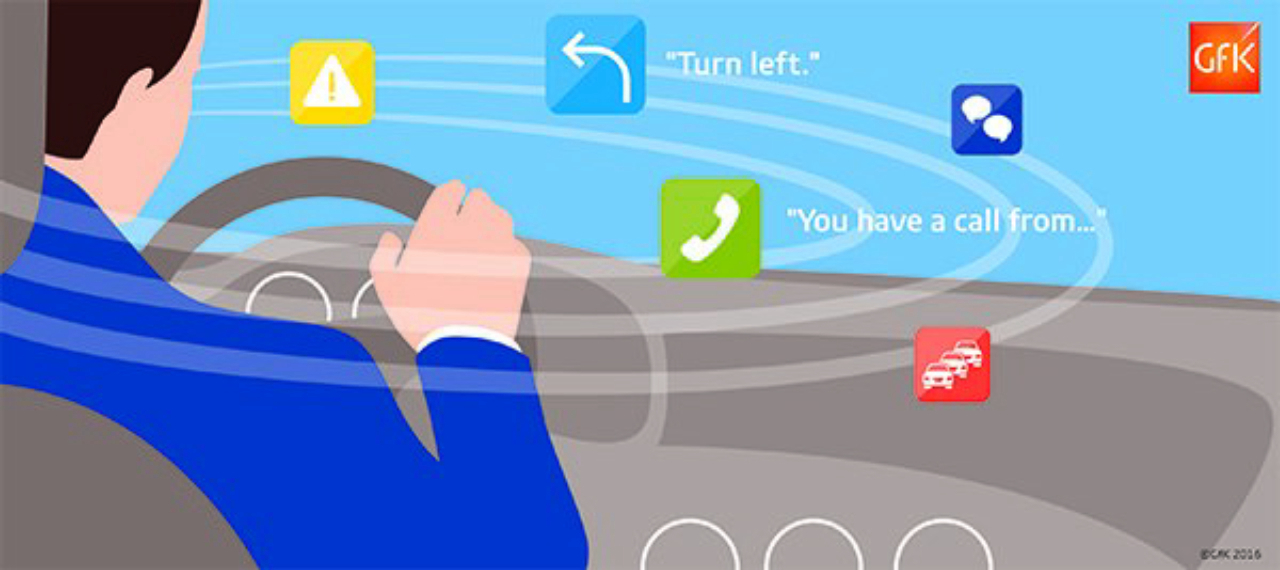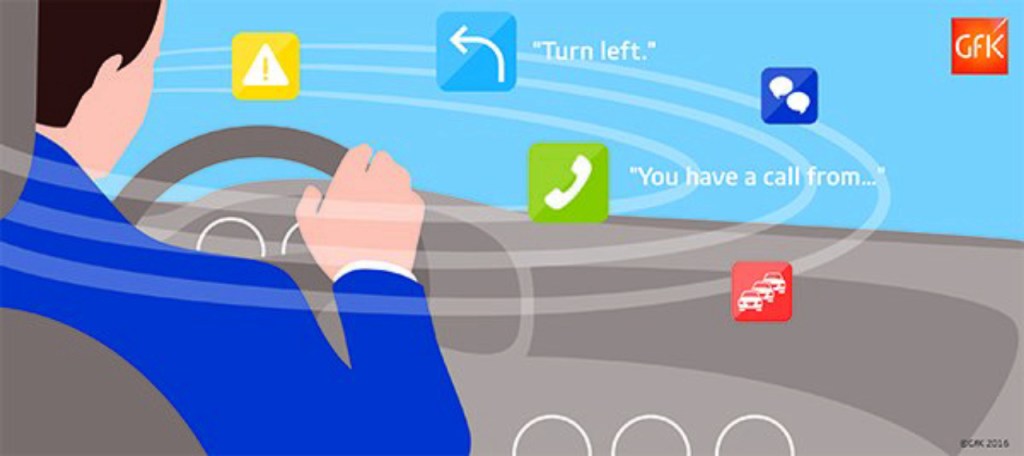Each year, thousands of people worldwide are injured or killed in motor vehicle accidents involving a distracted driver. Rapid growth in the installation and use of in-vehicle electronic features, along with an array of associated visual and auditory cues, are adding to driver distraction. Future in-vehicle electronic systems will need safer and more intuitive designs to enhance the driving experience while, at the same time, reducing the risk of distraction for today’s multitasking drivers.
One of our clients in the emerging connected vehicle space offered an innovative concept that addresses both safety and experiential needs with precisely and logically-placed audio cues. They sponsored user experience (UX) research with us to understand consumers’ acceptance of the concept, examine the potential impact, and assess the value that potential car buyers place on this technology and its intended benefits.
Sneak peek: Study findings reveal expected safety and driver experience benefits
Audio cues were considered by most participants in this study to be less distracting and more noticeable than visual cues, even among those who consider themselves to be more visually-oriented. Such audio prompts are perceived to be especially helpful in situations that demand the driver’s immediate attention, such as a blind-spot warning, lane departure warning or navigation prompt. They also have the added benefit of not requiring the driver to take his or her eyes off the road.

Our research uncovered the following perceived benefits of our client’s in-car technology:
- Improved focus (due to localization of sound)
- Ability to multitask (due to separation of sound)
- Better situational awareness
- Faster response and reaction times
- Less need to take eyes off road to view display prompts
- More intuitive reactions requiring less concentration
- Greater passenger awareness
- Enhanced input when visibility is limited
- Optimized sound placement for hearing impaired
- Enhanced audio experience and “cool-factor”
As with any new technology, education, clear consumer messaging and if possible, hands-on experience, are also critical to build awareness, comfort and demand. And this is just the start to a future of more engaged, alert and responsive drivers.
Please email me to share your thoughts at Melinda.Jamil@gfk.com (Senior Research Director, User Experience at GfK).



